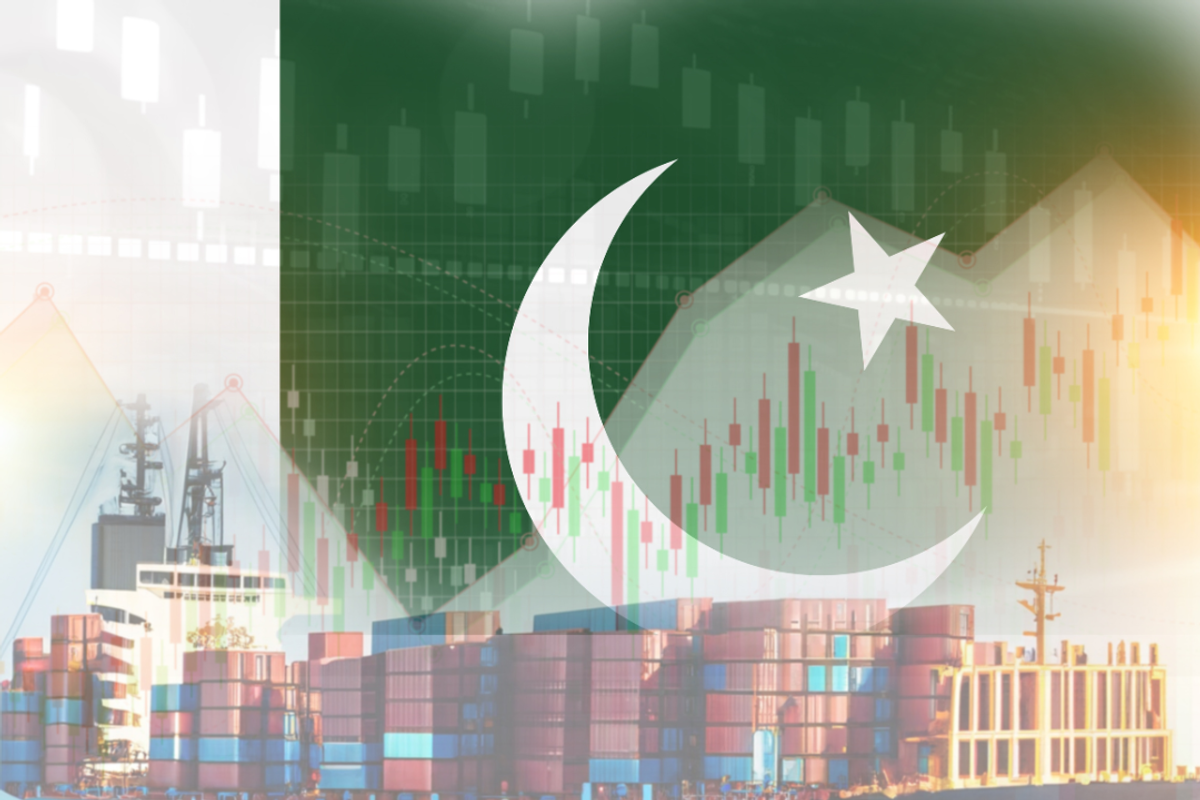Pakistan’s industrial landscape: which sector is recovering, which struggling?
Nukta dives into the numbers to see where the industrial sector stands today
Nida Gulzar
Research Analyst
A distinguished economist with an M. Phil. in Applied Economics, Nida Gulzar has a strong research record. Nida has worked with the Pakistan Business Council (PBC), Pakistan Banks' Association (PBA), and KTrade, providing useful insights across economic sectors. Nida continues to impact economic debate and policy at the Economist Intelligence Unit (EIU) and Nukta. As a Women in Economics (WiE) Initiative mentor, she promotes inclusivity. Nida's eight 'Market Access Series papers help discover favourable market scenarios and export destinations.

While some industries grapple with rising energy costs and economic uncertainty, others seize opportunities in shifting global trade dynamics.
Shutterstock
Pakistan’s industrial sector stands at a crossroads. While some industries grapple with rising energy costs and economic uncertainty, others seize opportunities in shifting global trade dynamics.
Government policies aim to diversify the country’s industrial base and bolster export-oriented industries. But the real questions are: Will the new industrial revival plan be the turning point? Where does the industrial sector truly stand today? Nukta dives into the numbers.
Cement sector showing signs of recovery
Pakistan’s cement sector is experiencing mixed trends, with local dispatches showing signs of recovery while overall demand remains sluggish. In February, cement dispatches rose 10% compared to the same month last year, driven by a 7% increase in local sales and a 34% surge in exports.
On a monthly basis, dispatches declined 8%, mainly due to fewer working days and trade disruptions at the Afghan border, which led to a 48% yearly drop in exports from the North.
Meanwhile, Southern cement manufacturers prioritized exports (up 60% as compared to the same month last year) to sustain capacity utilization amid weak domestic demand. Cement prices in the North rebounded by PKR 50 per bag, reaching PKR 1,350 per bag, though still below the PKR 1,500 peak of September.
Fertilizer sales slump amid weak farm economics
Fertilizer sales saw a significant decline in February. The urea off-take fell 37% to 0.34 million tons, and DAP off-take declined 65% to 0.04 million tons, both compared to the same month last year, largely due to water supply disruptions, weaker farm economics, and urea prices that discouraged early purchases.
Lower urea demand stems from reduced wheat production due to water shortages, dry weather, and uncertainty over support prices.
Oil marketing sector sees steady growth amid anti-smuggling efforts
Pakistan’s petroleum product sales rebounded to 1.1 million tons in February, marking a 2% increase as compared to the same month last year.
On a cumulative basis, the OMC industry volumes have recovered by a modest 4% during the first eight months of fiscal year 2024-25 (8MFY25), supported by stable fuel prices and a much better handle on cross-border illicit fuel trade.
Consequently, high-speed diesel (HSD) and motor spirit (MS) grew by 9% and 4%, respectively, supported by economic recovery, lower interest rates, reduced fuel prices, and government efforts to curb smuggling from Iran.
Additionally, HOBC sales surged to their highest levels in the first eight months of fiscal year 2024-25 (8MFY25), up 166%, as compared to the same period last year, as the price differential between regular unleaded gasoline and premium fuel has narrowed significantly, making the latter a more attractive choice for refueling for consumers,” Muhammad Ali, senior investment analyst at AKD securities told Nukta.
Auto sales maintain growth
Auto sales (including 2/3 wheelers) grew 5% in February, as compared to the same month last year, with passenger car sales up 16% year-on-year and LCVs & SUVs surging 49% year-on-year, driven by base effect, lower interest rates, stable prices, and economic recovery.
Motorcycle and three-wheeler sales also climbed 35% year-on-year, reflecting strong demand in the lower-income segment, while tractor sales plummeted 54% year-on-year due to weak farm income and high December sales.
In the first eight months of fiscal year 2024-25 (8MFY25), the auto volumes have fared well, increasing 50% year-on-year. Reduction in policy rates has provided an impetus to auto sales as the auto financing number has been steadily increasing (up 3% month-on-month).
Outlook
Pakistan’s industrial sector remains a mixed bag, with some industries showing signs of recovery while others struggle under economic pressures.
The cement sector is expected to see a 6% decline in offtakes in FY25, due to subdued construction, high prices, inflation, increased FED and royalty rates and reduced public spending, according to AKD Securities. While February dispatches rose 10% as compared to the same month last year, local dispatches are projected to remain weak until FY26, when monetary easing and higher Public Sector Development Program (PSDP) allocations may provide relief.
Fertilizer demand is expected to stay stable in CY25, though lower yields and unstable water supplies could pressure farmers, noted Abdul Basit, a research analyst at JS Global Capital, adding that mergers and improved gas supplies may support recovery.
The oil marketing sector is on a steady path, with growth driven by anti-smuggling efforts and seasonal demand, though rising competition and potential IMF-driven fuel price hikes pose risks.
Auto sales are expected to normalize after a sharp rebound in FY25. “It is pertinent to note that volumes were at their lowest in FY24; hence a low base was set last year. Moving forward, volumes are expected to grow at a normalized rate since the vehicle's prices are at an all-time high and consumers have low purchasing power,” Hamdan Ahmed, an investment analyst at Optimus Capital Management told Nukta.
However, the PKR 3 million financing cap, IMF’s proposed carbon tax, and water shortfall impacting farm income could slow demand growth, especially for tractors.










Comments
See what people are discussing